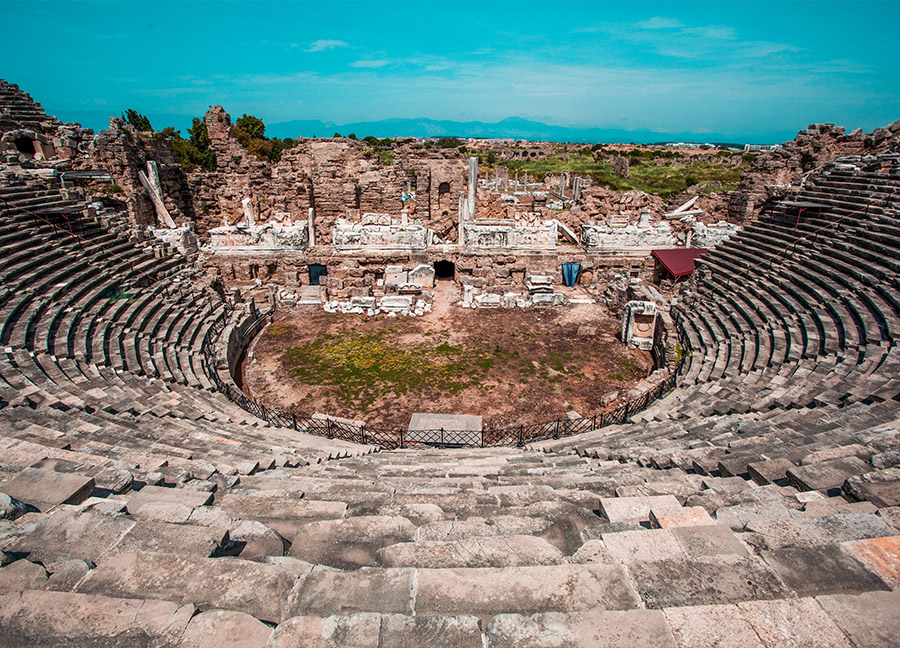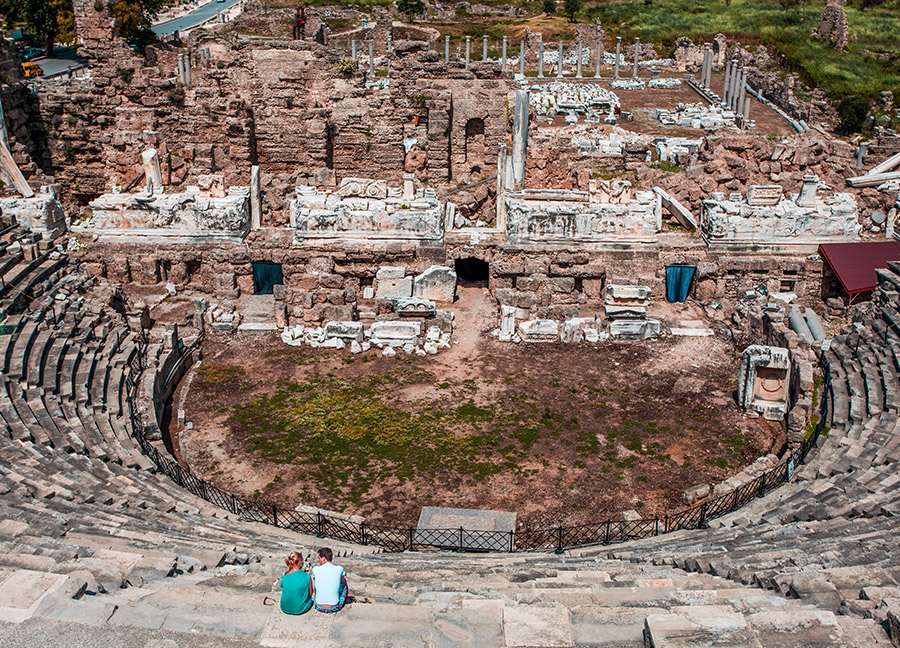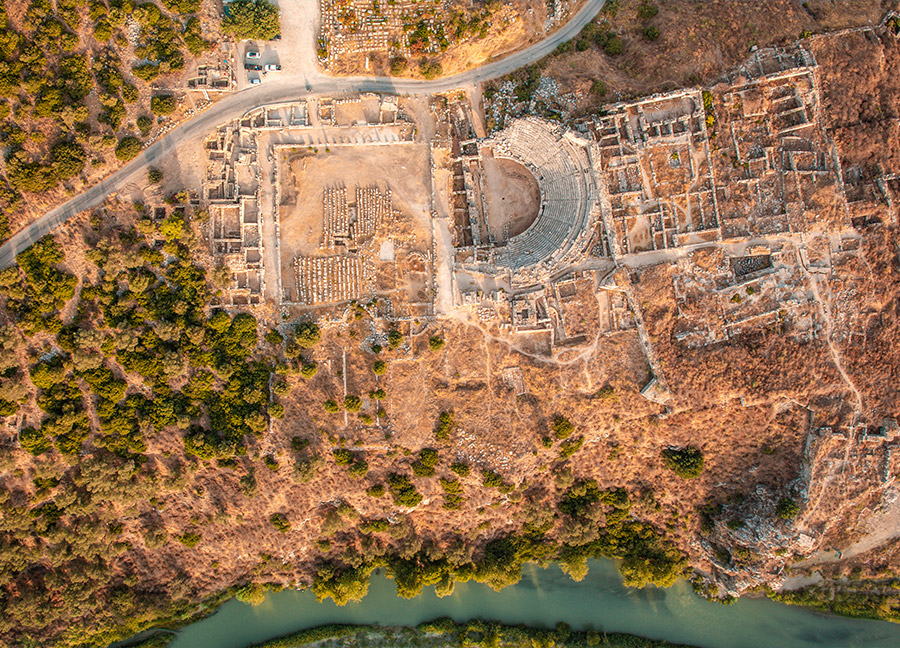Side Ancient Theater is one of the most precious works in the Ancient City of Side. It has a history dating back to the 8th century BC. It is in the city's center, in the narrow part of the peninsula where the ancient city is.
In terms of construction technique, the part of the theater built in the tradition of Roman Architecture, from the rows of seats to the road in the middle of the steps, leans on a slope. The upper part is placed on an inclined plane on the vaults. Side Ancient Theater is the only building example of Anatolia with this feature.
The façade of the three-storey stage building has been enriched with architectural ornaments and sculptures. The baroque architectural features of the Antonine Period can be seen in the decorations of the building. On the podium of the first floor is the Dionysus Frieze. In the frieze, the life of Dionysus, who is considered the ruler of the theater, is told chronologically from west to east and is concluded with Gigantomakhia at the eastern end.
In the 5th century, chapels were built inside the theater and the theater was used as a holy place in the Early Christian Period. The theater did not lose this feature until the last period it was used. Again in the Late Roman Period, the theater was used for gladiator and animal fights.
Imposing columns, sculptures and reliefs of mythological figures decorate the Side Ancient Theater. It offers a visual feast to approximately 17,000 people. The theater has architectural similarities with the Colosseum. It reflects the splendor of Rome continues to defy the years with all its splendor.








